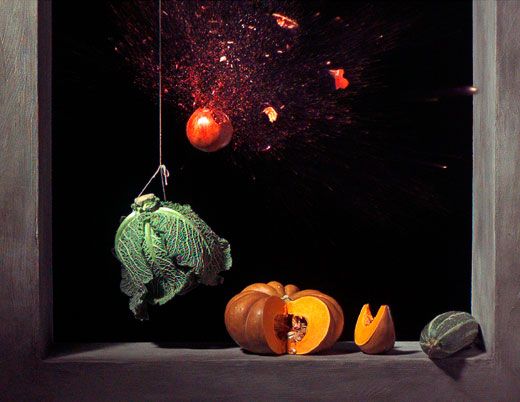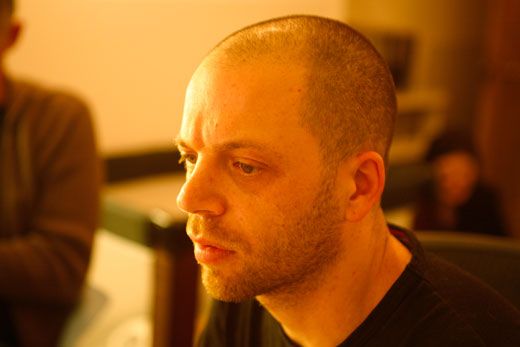Still Life Explosions
Artist Ori Gersht details the beauty and violence behind his works
/https://tf-cmsv2-smithsonianmag-media.s3.amazonaws.com/filer/Ori-Gersht-631.jpg)
Between 2006 and 2008, Israeli-born artist Ori Gersht created traditional still-life arrangements with real fruit or flowers—and then literally blew them up, capturing it all on video. His film Pomegranate is being shown at the Hirshhorn Museum's Black Box Theater. Gersht spoke with the magazine's Joseph Caputo.
What makes destruction so compelling to watch?
Violence can be very grotesque and also intensely attractive. What interests me is how the two—beauty and violence—live side by side, and how moments can be created and erased almost simultaneously. Destruction is painful, but at times it can be very cathartic.
So, do you think that destruction is more interesting than creation?
One cannot exist without the other. This circle of existence is comprised of the two. Consider the bloody history of Europe: there was a great aspiration for high culture, yet this very same culture was shaped by brutality and barbarism.
Is your work a commentary on the violence we see in the world around us?
My work is not so much a direct commentary as it is an open-ended observation of the absurdities around us. I'm thinking about scenarios where, in one place, there is a very bloody war, while in another place people are living a comfortable, decadent lifestyle. I'm intrigued by that kind of parallel existence, and how one sometimes weaves into the other.
What other ways does your work go beyond the traditional still life?
I'm capturing events that are happening at the rate of 1,600 frames per second, moments that are too quick for the mind to process. The film was shot with an HD digital camera, so there is no materiality to the footage - it goes as data to a hard drive. It's very important that in the outcome of my film, I have this suspension of disbelief where the viewer is deceived to think, for a short moment, that what they're looking at is a painting.
Why did you choose a pomegranate to shoot?
The reference in this instance is a Juan Cotán painting ["Quince, Cabbage, Melon and Cucumber," 1602] but I decided to use a pomegranate [instead of a quince]. I think that it has to do with the visual imagination of the pomegranate, how it will bleed, how these multi-seeds will keep spraying thought the frame. I suppose in retrospect that it's also the relationship that the pomegranate has to a grenade. But the choice is not very rational, you know, sitting and thinking that this means this or that means that. I can say that the image presented itself and I followed it through.
How else is 'Pomegranate' a twist on Juan Cotan's work?
I was interested in the static image of the Juan Cotán painting in relation to what Harold Edgerton was doing at MIT in the 50s, when he managed to freeze high-speed movement in the photograph of the bullet that goes though an apple. I take those two polemic moments and attempt to freeze a moment that is so fast and present it as a static photograph. So I was trying to negotiate those extremes.
/https://tf-cmsv2-smithsonianmag-media.s3.amazonaws.com/accounts/headshot/joseph-caputo-240.jpg)


/https://tf-cmsv2-smithsonianmag-media.s3.amazonaws.com/accounts/headshot/joseph-caputo-240.jpg)